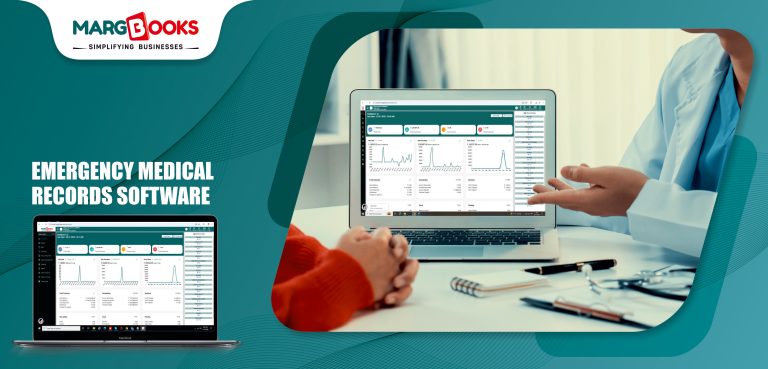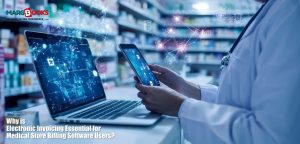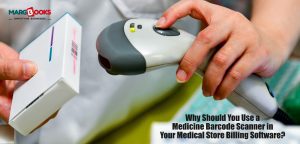In the fast-paced world of emergency medicine, having immediate access to accurate patient information can mean the difference between life and death. Emergency medical records (EMR) software plays a pivotal role in ensuring that medical professionals can provide the highest level of care during critical situations. This blog explores why emergency medical records software is so crucial, the features that make it effective, and how it is shaping the future of emergency healthcare.
What is Emergency Medical Records Software?
Emergency medical records software is a specialized tool used by healthcare providers to access, manage, and update patient records during emergency situations. This software allows medical professionals in emergency rooms (ER), urgent care centers, ambulances, and other urgent care settings to quickly retrieve critical patient data such as medical history, allergies, medications, and previous treatments. With this information readily available, doctors, nurses, and other healthcare providers can make well-informed decisions and provide optimal care.
Why is Emergency Medical Records Software Important?
1. Speed and Efficiency
In an emergency, every second counts. Emergency medical records software enables healthcare providers to access patient data instantly, even if the patient is unconscious or unable to provide information themselves. By reducing the time spent gathering medical history, it speeds up diagnosis and treatment, allowing for faster interventions that can save lives.
For example, if a patient arrives at the emergency room suffering from chest pain, having immediate access to their medical records (including heart conditions or medications they’re taking) can help doctors determine if they are at risk for a heart attack. This quick decision-making capability can be life-saving.
2. Improved Patient Safety
EMR software can significantly reduce the risk of medical errors. In emergency care, miscommunication or incomplete patient information can lead to incorrect treatments, medication errors, and other potentially harmful situations. EMRs ensure that healthcare providers have access to a comprehensive, up-to-date record of the patient’s medical history, reducing the likelihood of errors caused by missing or incorrect data.
Furthermore, the software often includes built-in alerts for potential drug interactions or allergies, helping to prevent adverse reactions. By providing healthcare professionals with all the information they need to make informed decisions, emergency medical records software contributes to better patient safety overall.
3. Collaboration Across Teams
In emergency care settings, multiple healthcare professionals often need to collaborate in a high-stress environment. Whether it’s doctors, nurses, paramedics, or specialists, each team member must have access to the same patient information in real-time. EMR software facilitates this by allowing multiple users to access the same record simultaneously, regardless of their location.
For instance, if paramedics are treating a patient on the way to the hospital, they can input data into the EMR system that will be available to emergency room staff before the patient even arrives. This enhances collaboration between teams and ensures that everyone is on the same page.
4. Data Accuracy and Continuity
In emergencies, patients are often unable to provide a complete medical history, especially if they are unconscious, disoriented, or unable to communicate. Having access to an electronic medical record that is accurate and up-to-date helps ensure continuity of care, especially for patients with chronic conditions, those who are elderly, or those who regularly visit multiple healthcare providers.
For example, a diabetic patient arriving at the ER may not be able to tell medical professionals their current blood sugar levels or insulin regimen. However, with the help of the EMR system, doctors can access the patient’s prior medical records to make informed decisions about treatment.
Key Features of Effective Emergency Medical Records Software
Not all EMR software is created equal. For it to be truly effective in an emergency setting, certain features are essential:
- Real-Time Data Access: Information must be updated in real-time so that healthcare providers have access to the most current data available, ensuring they’re making decisions based on the latest information.
- Integration with Other Healthcare Systems: Effective EMR software should seamlessly integrate with hospital management systems, laboratory systems, imaging software, and other medical tools. This allows for a comprehensive view of the patient’s health and history, making it easier to deliver care in emergencies.
- Mobile Access: Emergency responders, such as paramedics, need mobile access to patient records while on the go. Mobile-enabled EMR software allows healthcare providers to access and update records from any device, wherever they are.
- User-Friendly Interface: In an emergency, the last thing healthcare providers need is a complicated system that requires a lot of time to navigate. A user-friendly interface ensures that medical professionals can access patient information quickly and efficiently, reducing the chance of delays.
- Security Features: Since patient data is highly sensitive, EMR software must comply with data protection regulations, such as HIPAA in the U.S. Security features, including encryption, authentication, and audit trails, help ensure that patient data is protected at all times.
The Future of Emergency Medical Records Software
As technology continues to evolve, the future of emergency medical records software is bright. One exciting development is the integration of artificial intelligence (AI) and machine learning (ML) into EMR systems. AI can assist with diagnosing conditions based on patient history and real-time data, while machine learning algorithms can predict potential complications or health risks based on trends in a patient’s medical data.
Additionally, the use of wearable devices and remote monitoring tools is becoming more prevalent. These devices can transmit real-time health data (such as heart rate, oxygen levels, and glucose readings) directly into the patient’s medical record, allowing for faster and more accurate decision-making during emergencies.
Conclusion
In emergency medical settings, having quick access to accurate patient information is vital to delivering the best possible care. MargBooks provides emergency medical records software healthcare professionals with the tools they need to access critical data efficiently, improve patient safety, and collaborate with other members of the care team. As technology continues to advance, EMR software will only become more integral in ensuring the success of emergency medical care. It is clear that the future of emergency healthcare depends on robust, real-time systems that enable healthcare providers to make fast, accurate decisions and deliver life-saving treatments when they are needed most.




